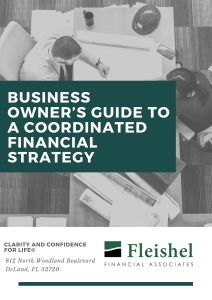It’s easy to feel like financial independence is out of reach, especially if you know you aren’t on track to retire early, but don’t be discouraged. There are plenty of ways to use the concept of financial independence and apply it to your own life.
Most people think of financial independence in relation to the FIRE movement, which stands for “financial independence, retire early”. The idea is to save and invest aggressively early in your career so you can quit working well ahead of retirement age.
For someone who subscribes to the FIRE method, financial freedom is sometimes defined as having 25 times your annual expenses saved. For example, if you plan to spend $45,000 per year, you’ll need about $1.12 million in your retirement account. One way to get there is to live as frugally as possible. Track your expenses to see which are worthwhile and which you can do without. This helps you save more and live on less so your retirement savings will grow quickly and last even longer.
The truth is that this strict definition of financial independence can hold a lot of people back. If early retirement is the only goal, getting there can seem insurmountable.
There are plenty of ways to measure financial independence. Having to work hard to pay the bills is one thing but having enough money left over to do the things you love is a sign of financial independence. Ask yourself if what you’re spending your money on brings value or enjoyment to your life. Travel. Take an art class. Join a gym. Go to the spa. Having the money to do these things is its own financial freedom.
If you don’t want to quit working early, you can use the practices of the FIRE method in other ways to boost your savings, cut down on spending, and build a bigger safety net. This allows you to weather a lay-off or significant illness without your finances going off the rails or scale back on how often you work as you approach retirement.
If you separate the idea of early retirement from financial independence, it becomes much more attainable. In the end, financial independence is about having choices. Being able to quit a high-paying but extremely stressful job to do something more enjoyable, even if it’s for less pay, is one example. Cutting back the number of hours you spend working is another.
The important thing to remember about financial independence is this: if your only goal is early retirement, prepare yourself for a moving target. Plenty of things can undo your hard work. A falling stock market, a major change to the tax code, or a sudden serious illness can all be financially devastating. Early retirement just isn’t the best goal for everyone’s situation.
On the other hand, spending smart and saving what you can is a good approach for anyone to take. When you approach financial freedom from a broader perspective, you might find that it’s easier to achieve than you thought.
Every investor’s situation is unique and you should consider your investment goals, risk tolerance and time horizon before making any investment. Prior to making an investment decision, please consult with your financial advisor about your individual situation. Investing involves risk and you may incur a profit or loss regardless of strategy selected, including diversification and asset allocation . Any opinions are those of Tom Fleishel and not necessarily those of Raymond James.
For someone who subscribes to the FIRE method, financial freedom is sometimes defined as having 25 times your annual expenses saved. For example, if you plan to spend $45,000 per year, you’ll need about $1.12 million in your retirement account. One way to get there is to live as frugally as possible. Track your expenses to see which are worthwhile and which you can do without. This helps you save more and live on less so your retirement savings will grow quickly and last even longer.
The truth is that this strict definition of financial independence can hold a lot of people back. If early retirement is the only goal, getting there can seem insurmountable.
There are plenty of ways to measure financial independence. Having to work hard to pay the bills is one thing but having enough money left over to do the things you love is a sign of financial independence. Ask yourself if what you’re spending your money on brings value or enjoyment to your life. Travel. Take an art class. Join a gym. Go to the spa. Having the money to do these things is its own financial freedom.
If you don’t want to quit working early, you can use the practices of the FIRE method in other ways to boost your savings, cut down on spending, and build a bigger safety net. This allows you to weather a lay-off or significant illness without your finances going off the rails or scale back on how often you work as you approach retirement.
If you separate the idea of early retirement from financial independence, it becomes much more attainable. In the end, financial independence is about having choices. Being able to quit a high-paying but extremely stressful job to do something more enjoyable, even if it’s for less pay, is one example. Cutting back the number of hours you spend working is another.
The important thing to remember about financial independence is this: if your only goal is early retirement, prepare yourself for a moving target. Plenty of things can undo your hard work. A falling stock market, a major change to the tax code, or a sudden serious illness can all be financially devastating. Early retirement just isn’t the best goal for everyone’s situation.
On the other hand, spending smart and saving what you can is a good approach for anyone to take. When you approach financial freedom from a broader perspective, you might find that it’s easier to achieve than you thought.
Every investor’s situation is unique and you should consider your investment goals, risk tolerance and time horizon before making any investment. Prior to making an investment decision, please consult with your financial advisor about your individual situation. Investing involves risk and you may incur a profit or loss regardless of strategy selected, including diversification and asset allocation . Any opinions are those of Tom Fleishel and not necessarily those of Raymond James.





0 Comments